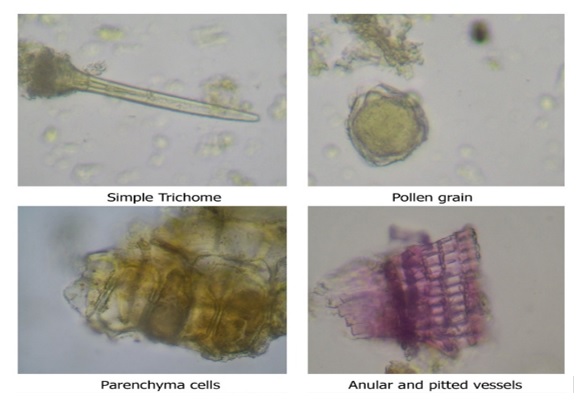Pharmacognostical, phytochemical and High Performance Thin Layer Chromatography evaluation of Bala Taila
DOI:
https://doi.org/10.21760/jaims.v6i3.1307Keywords:
Bala Taila, Pharmacognostic, Physicochemical analysis, HPTLCAbstract
Introduction: Bala Taila is one of the most popular oil preparations of Ayurveda which not only serves the purpose as curative but also plays role in preventive and promotive aspects. Materials And Method: Bala Taila was evaluated for pharmacognostic and pharmaceutical analysis. Results and Discussion: Pharmacognostic study showed the presence of contents such as simple trichome, pollen grain, rhomboidal crystals, annular and pitted vessels. Physico-chemical analysis showed that the loss on drying 0.735% w/w, Specific gravity 0.916g, Acid value 2.186, Saponification value 156.89, Iodine value 87.6 and Refractive index 1.4840. Conclusion: From the study, data developed can be espoused for laying down the standards of Bala Taila.
Downloads
References
2. Swathy SS, Panicker S, Nithya RS, Anuja MM, Rejitha S, Indira M. Antiperoxidative and Antiinflammatory Effect of Sida cordifolia Linn On Quinolinic Acid Induced Neurotoxicity. Neurochem Res. 2010; 35: 1361-7.
3. Dr Ketan Rathwa, Dr Rakesh Salve. Pharmacognostical Study of Amalaki (Emblica Officinalis Gaertn). European Journal of Biomedical and Pharmaceutical Sciences. 2018, Vol 5, Issue 7, 764-766.
4. Govt. of India Ministry of Health and Family Welfare. The Ayurvedic Pharmacopeia of India. Govt of India. 2007, 1st edition, Part 2, Volume 1; appendix 2; pg 141.
5. Govt. of India Ministry of Health and Family Welfare. The Ayurvedic Pharmacopoeia of India. Govt of India. 2007, 1st edition, Volume 1; Part 2, appendix 3; pg 212-213.
6. Raut RG. Analytical study of Balaashwagandha Taila. Ayurpharm International Journal of Ayurveda and Allied Sciences. Vol 3, No 6(2014),p171-176.
7. Govt. of India Ministry of Health and Family Welfare. The Indian Pharmacopoeia, The Indian Pharmacopeial Commission, Ghaziabad. 2010;1,84-174.
8. Govt. of India Ministry of Health and Family Welfare. The Indian Pharmacopoeia, The Indian Pharmacopeial Commission, Ghaziabad. 2010;1,84-174.
9. Govt. of India Ministry of Health and Family Welfare. The Indian Pharmacopoeia, The Indian Pharmacopeial Commission, Ghaziabad. 2010;1,84-174.
10. Anonymous. Planner Chromatography. Modern Thin Layer Chromatography, Switzerland. 1999;p2-16.
11. Puri HS. Rasayana - Ayurvedic Herbs for Longevity and Rejuvenation. London: Taylor and Francis. Vol 8, 2003;p64-70.
12. Kalaiarasan A, John SA. Phytochemical screening and antibacterial activity of Sida cordifolia L (Malvaceae) leaf extract. Int J Med Res 2010; 1(2):94-8.
13. Auddy B, Ferreira M, Blasina F, Lafon L, Arredondo F, Dajas F, et al. Screening of antioxidant activity of three Indian medicinal plants traditionally used for the management of neurodegenerative diseases. J Ethnopharmacology. 2003; 84(2-3):131-8.















